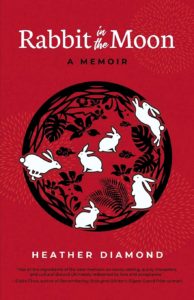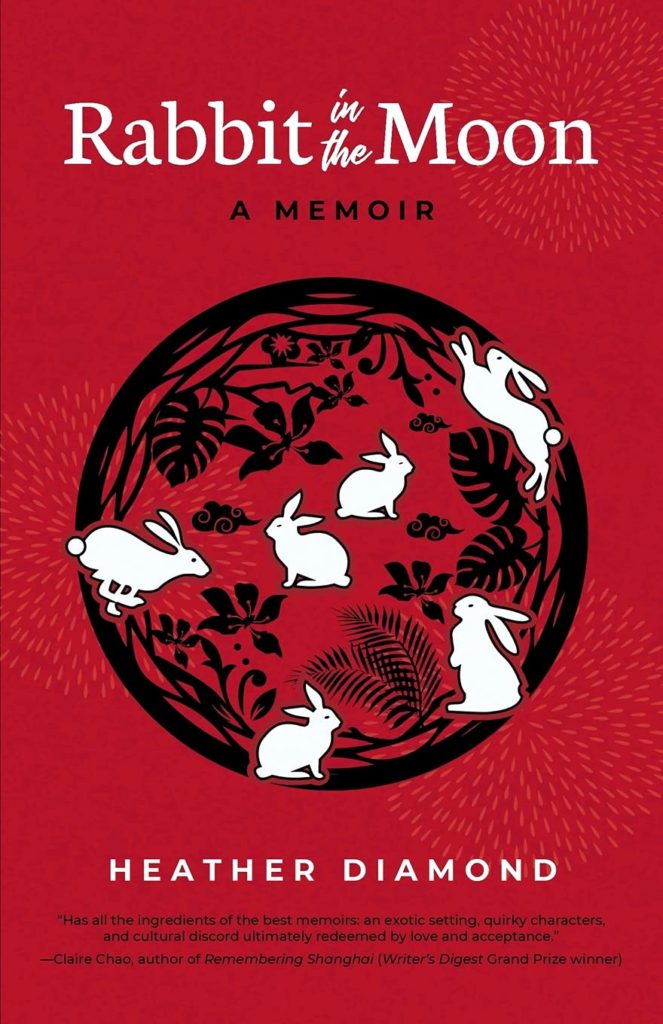by Heather A. Diamond (Camphor Press, March, 2021)
Review by Leanne Ogasawara
Midway upon the journey of our life
I found myself within a forest dark,
For the straightforward pathway had been lost.
—Dante
Heather Diamond’s Rabbit in the Moon begins in a mid-life crisis when she finds herself lost. Lost in her marriage and lost in her career. Seeking to re-invent herself, she embarks on the coursework for a PhD which brings her to the East-West Center on the island of Hawaii, where she meets and falls in love with Fred. Before you think anything, I promise that you will fall in love with this guy too.
The reader follows along with Diamond as she experiences full-blown culture shock as she falls head over heels for Fred, marries him, and then grapples with understanding his Chinese background.
In the old days, the Lonely Planet guidebooks included a section on the stages of culture shock: honeymoon, frustration, adjustment, and acceptance. Until Rabbit in the Moon, I had never read such a vivid account of how it feels to go through these stages. In Diamond’s story, the reader skips the honeymoon phase of culture shock and goes straight to the frustration stage after the couple decides to spend a year in Fred’s hometown of Hong Kong.
Before one starts imagining the bright lights of Hong Kong, Diamond arrives on Cheung Chau—a one-hour ferry ride from the bright lights of the big city—on the slow boat. Cheung Chau is a world away, a place to which Hong Kongers have long flocked to get away from it all. Originally a fishing village, Cheung Chau boasts excellent restaurants and fresh fish. Diamond’s book quickly becomes an evocative journey through this special island.
About half the book is taken up with the frustration stage of culture shock. And the author really does have her hands full. Nothing could have prepared Diamond for the Lau Family: Ebullient, fiercely loyal, fun-loving, and warm-blooded to the core, they are as wonderful as one would expect given Fred’s personality. Where Diamond is an introvert, used to keeping to herself, the Laus do everything together, noisily. Like weekly dinners, like daily visits to eachother, like yearly trips en famille, where the extended family piles onto buses chartered for group excursions into the mainland or on vacations at onsen hot springs in Japan. For people not accustomed to close, large families, they will feel discomfort as if they too were an outsider living with the Lau Family. But one of the joys of the book is getting to know the Laus.
Such immersive writing is like that of an anthropologist out in the field, documenting not just the world around them, but the changes happening in their own minds as well. Diamond allows the reader the privilege of following along as the author not only falls in love with Fred, but with his entire family. Indeed, we watch her falling in love with life.


